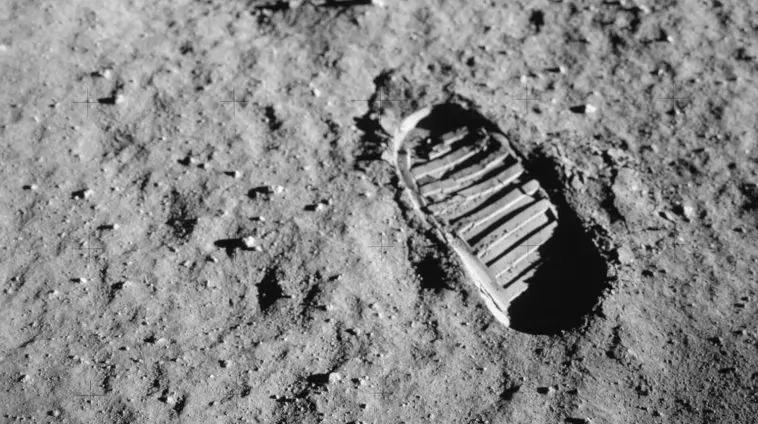[Originally published in 2014 as Will This Bring Back the Moon Dust Argument?]
[Editor’s note: This is a good example of how creation scientists do their best to be as careful with their science as they are with their biblical theology.
Today, we are still waiting for the Artemis project to return human researchers to the moon to expand the study of the rate of dust accumulation on the moon. In the meantime, an interesting paper reported in 2019 that they expect a rate of c. 1.4 tons of new dust collects on the moon every day. While that is not a large amount for a surface area the size of the moon [14.6 million square miles (38 million square km)], when the time scale is as exponentially different as that of the deep-time scientist and the creationist, those numbers add up quickly. Enjoy!]
Answers in Genesis keeps a list of creationist arguments that should never be used. It is a good list, and I am glad that Answers in Genesis maintains it. It would be nice if an evolutionary source did the same thing. I don’t know how many times I have to refute nonsense like vestigial tails, lanugo hair, vestigial hair, the vestigial appendix, junk DNA, and all manner of evolutionary arguments that are simply not consistent with the data we currently know.
In any event, the first item on the creationist’s bad argument list is the Moon Dust Argument. In brief, the argument used an estimate of how quickly dust accumulates on the moon to calculate how much dust the astronauts should have found when they landed there. It claims that if the moon were really billions of years old, there should be more than 100 feet of dust on its surface. Since astronauts found only a thin layer of dust when they landed, the moon is not billions of years old.
The problem with that argument rests on the estimate of how quickly dust accumulates on the moon. It was based on how quickly dust accumulates on earth. Obviously, the earth is quite different from the moon, so it’s not clear how good such an estimate is. In addition, other estimates have been made using other methods, and those estimates mostly disagree with one another.
Since there seemed to be no good way of estimating how quickly dust accumulates on the moon, responsible creationists stopped using the argument, and that’s how it ended up on the Answers in Genesis list of arguments that should never be used.
Well, some interesting experiments have been done to provide a more direct measurement of dust accumulation on the moon, and the results are surprising, at least to those who are committed to an old earth.
In 1969, the Apollo 11 crew left a device containing solar cells and thermometers on the moon. Its job was to measure moon dust accumulation. Essentially, it sent data back to the earth indicating the voltage it was producing. As moon dust accumulated, it would block light from the solar cell, reducing the voltage.
Later Apollo crews left similar devices behind, and as a result, NASA had a lot of data regarding how the solar cells lost voltage over time. Those data, however, were lost. Well, they have recently been recovered, so Monique Hollick and Brian J. O’Brien (the inventor of the devices left on the moon) have decided to analyze the data.
Of course, there is a problem.
While it is clear that dust accumulation reduces the voltage of the solar cells, there is no way to convert the loss of voltage into a specific thickness of dust. However, experiments were done back on earth where fake moon dust was sprinkled on similar solar cells and the voltage drop was measured. As a result, Hollick and O’Brien decided they had a “calibration” that could convert the voltage of the solar cells on the moon into the thickness of dust that accumulated there.
They recently published the results of their analysis in the journal Space Weather:1
…this provides the first direct measured long-term net accretion of dust with an upper limit of order 100 µg cm−2 yr−1, equivalent to a layer 1 mm thick in 1000 years, but it may be significantly less.
That is an incredibly fast accumulation rate!
After all, if the moon really were about 4.5 billion years old and this rate of accumulation is anything close to representative of what had been going on during that time, the moon should have had thousands of meters of dust on it!
Now obviously, this is an incredibly unrealistic calculation.
The authors themselves say the rate of accumulation may be significantly less, and meteor strikes can get rid of accumulated dust. Also, we might be in a particularly “dusty” phase of history. Perhaps this measurement is not indicative of what has happened through most of the moon’s past. Nevertheless, it is hard to imagine how this estimate can be made consistent with an ancient moon without a lot of special pleading.
This, of course, is why some scientists are saying Hollick and O’Brien can’t be correct. Science News quotes Dr. Lawrence Taylor as saying:2
It’s just too much dust…Nobody will believe it.
He thinks the estimate is flawed because the fake moon dust isn’t a good mimic of real moon dust. Of course, Taylor could be right. It’s not clear how well an experiment done here on earth with human-made “dust” can adequately model what is happening on the moon with real moon dust.
So should creationists start using the moon dust argument again? Certainly not! While this is probably the best estimate of moon dust accumulation yet, it still has its flaws. Nevertheless, I plan to keep my eye on what happens next in this interesting saga!
References
- Monique Hollick and Brian J. O’Brien, “Lunar weather measurements at three Apollo sites 1969–1976,” Space Weather 11(11):651–660, 2013
- Meghan Rosen, “Moon Dust Gathers Surprisingly Fast,” Science News, January 11, 2014, p. 6







